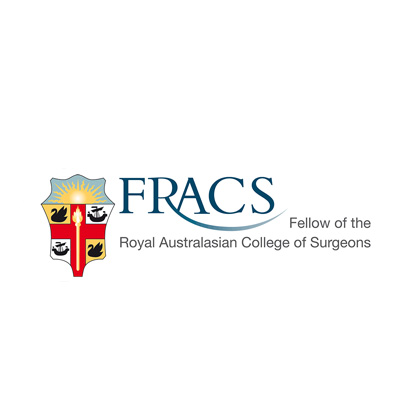Anal Surgery Brisbane Surgeon | Doctor Stephen Allsion
Anal Fissures
Anal surgery Brisbane – An anal fissure is a tear or crack in the lining of the anal canal. Surrounding the anal canal are the muscles which control bowel function. These muscles are called the anal sphincter.
Anal surgery Brisbane | Anal Fissure Management
Anal surgery Brisbane | Non-surgical treatment options include high fibre diet, stool softeners and topical therapy such as rectogesic, diltiazem or nifedipine. Dr Allison can discuss the options of the treatments. Sometimes these conservative measures do not cure the fissure.
Surgery for an anal fissure is called an internal sphincterotomy. A portion of the internal part of the anal sphincter is divided in an internal sphincterotomy. This reduces the sphincter muscle pressure allowing increased blood supply to the lining of the anal canal where the fissure is located resulting in healing of the fissure.
The risks are incontinence (never seen in Dr Allison’s practice as tends to divide too little rather than too much muscle), ongoing fissure pain (where Dr Allison has been too conservative with dividing muscle), and a wound infection of 1%. In those where the operation has not cured the problem, usually the instigation of the cream option will cure the problem. Occasionally, there is the need for further surgery, mostly in the form of a redo lateral internal sphincterotomy.
In some chronic fissures, it may be necessary to perform an advancement flap, where the skin of the perineum (skin around the anus) is advanced into the anus to cover the fissure.
To learn more or to schedule an appointment please call reception on Tel: 07 3397 2634 or submit your inquiry on our CONTACT PAGE.
Haemorrhoids
Haemorrhoids are vascular cushions inside the anus which can become enlarged causing bleeding, prolapse and pain.
Management of Internal Haemorrhoids
In smaller haemorrhoids, then HET (high energy technology) which is essentially the use of bipolar diathermy to reduce the vascularity and the mobility of the haemorrhoids can be successful.
For larger haemorrhoids, surgery is needed.
Haemorrhoidectomy is removal of these vascular cushions.
Usually there are 3 separate vascular cushions. If they are not too large they can be removed individually. This leaves 3 defects around the anus which may be closed with sutures or left open to heal naturally.
For larger, circumferential haemorrhoids surrounding the entire anal canal, a stapled haemorrhoidectomy can be deployed. These are the most difficult haemorrhoids to cure. The anus is dilated by temporarily paralysing the anal muscles (this paralysis recovers in a few hours). A circular staple gun is placed through the anus to remove a cuff of the lining of the rectum (the bowel just above the anus). This reduces the blood supply to the haemorrhoids and controls the prolapse of the haemorrhoids. Occasionally, Dr Allison will need to perform a second operation at a later date to remove remaining skin tags that have not shrunk enough.
After the operation, most people stay in hospital for one day for pain management. When the pain has settled enough to be controlled by oral analgesia, you will be discharged home.
Postoperative Recovery
Pain control: Dr Allison will send you home with adequate analgesia. If this is not sufficient, you will need to contact Dr Allison.
Wound care. You will need baths or showers to soothe the area and allow wound healing. If there has been a resection. For HET, there may be a small amount of bleeding for 2 weeks that will settle. For a stapled haemorrhoidectomy, there are no external wounds. In those requiring a formal resection, there will be discharge from the surgery and underwear liners will be required in the short term. Wounds usually heal over a 2 to 4 week period.
What are External Haemorrhoids?
External haemorrhoids are vascular cushions outside the anal canal. If they become thrombosed (get a clot in them), they are very painful.
Management of External Haemorrhoids
In those people with thrombosed external haemorrhoids alone, surgical intervention is very effective. The decision to surgically remove the thrombosed haemorrhoid depends upon many factors such as the size of the thrombosis, the length of time the thrombosis has been present, and the amount of pain being suffered. The decision to proceed to surgery will be made in consultation between yourself and Dr Allison.
This operation requires excising the thrombosed haemorrhoid completely.
Fistula-in-ano
A fistula-in-ano is a connection, like a tunnel, between the skin outside the anus and the anal canal within the anus. The anus is the lowest part of the bowel. The anus is surrounded by the anal sphincter which is the muscle which control the bowels. A fistula usually passes through the anal sphincter. It is usually associated with a perianal abscess or collection of pus.
Management of Fistula-in-ano
The operation to repair a fistula-in-ano entails finding the tunnel between the skin on the outside and the opening in the anal canal.
Dr Allison will make a judgement about how much of the sphincter muscle is involved on the inside of the fistulous tunnel. If less than half of the sphincter complex is inside the fistula then Dr Allison will lay open “roof” of the tunnel internally. This is called a fistulotomy. In this situation, more than half of the sphincter muscle remaining intact outside the tunnel. This is thought to be potentially dangerous with regard to control of bowel movements andtherefore a fistulotomy is avoided to avoid faecal incontinence.
If more than half of the sphincter muscle is within the fistulous tunnel, Dr Allison will insert a draining seton (a plastic string) along the fistula to identify the tract in preparation for future treatment. The most common option is insertion of a fibrin plug. This is a biologic plug that obliterates the fistula tract for cure. Other options include a mucosal advancement flap, where a portion of the lining of the bowel above the fistula is mobilised and placed to cover the internal opening of the fistula. Other options include a LIFT procedure where the fistula is ligated (tied off). These all have variable degrees of success.
Perianal Abscess
A perianal abscess is a collection of pus around the anus.
Management of Perianal Abscess Explained
Under a general anaesthetic, the abscess is opened and packed with gauze to allow the pus cavity to heal naturally. This gauze packing will need changing at home until the cavity heals. If the abscess is associated with a fistula-in-ano (see above) this will need treatment at a later date.





